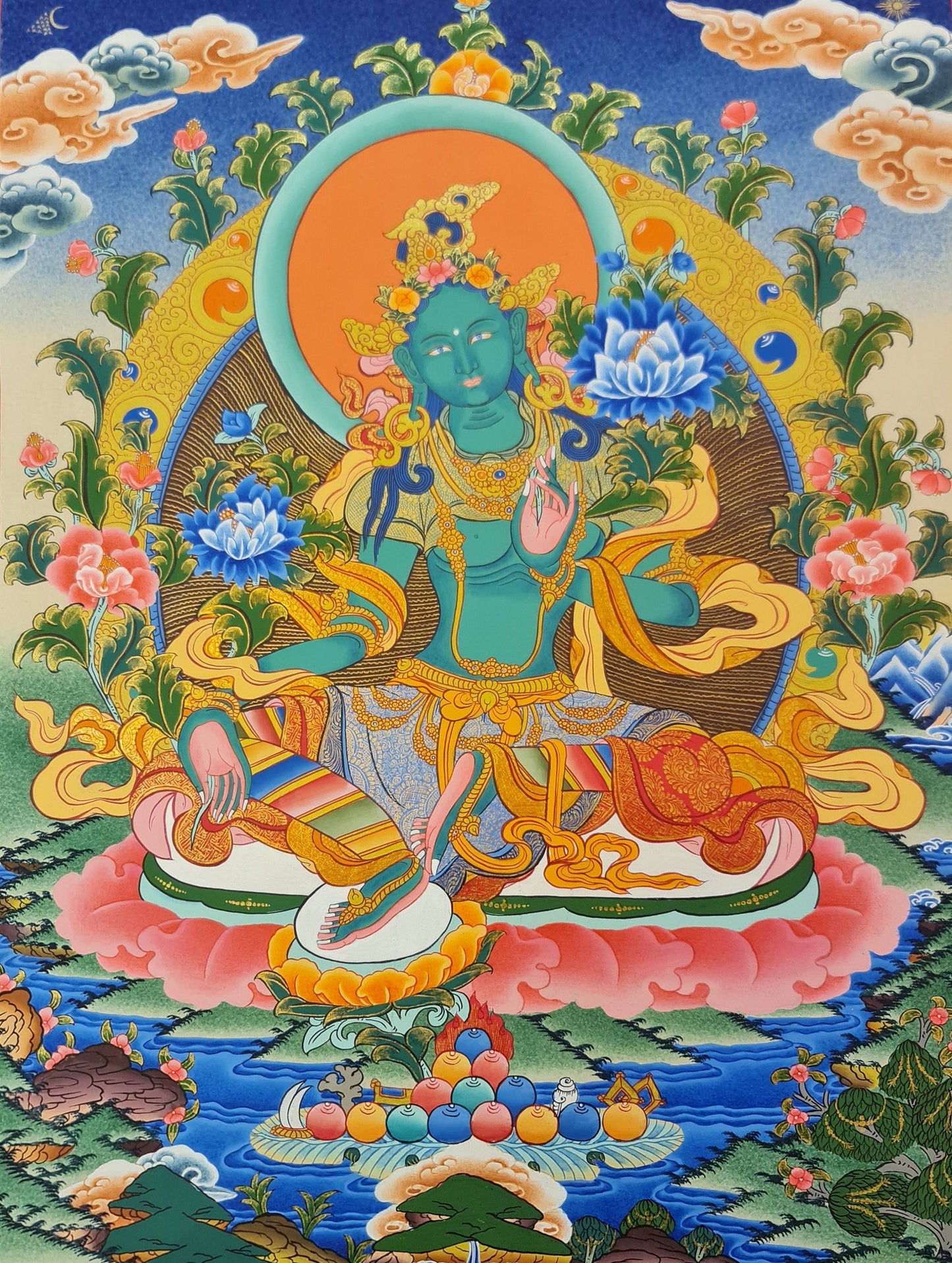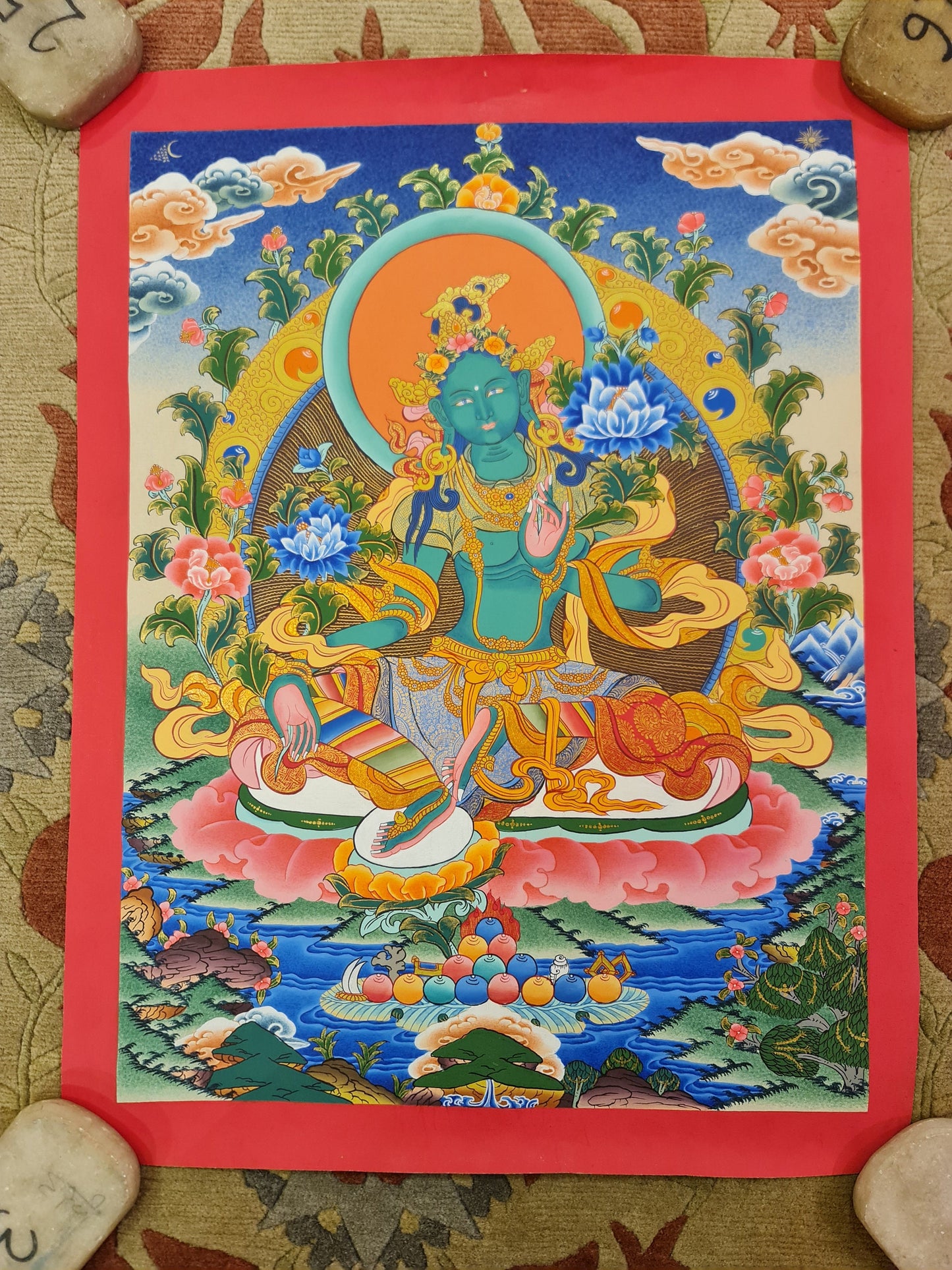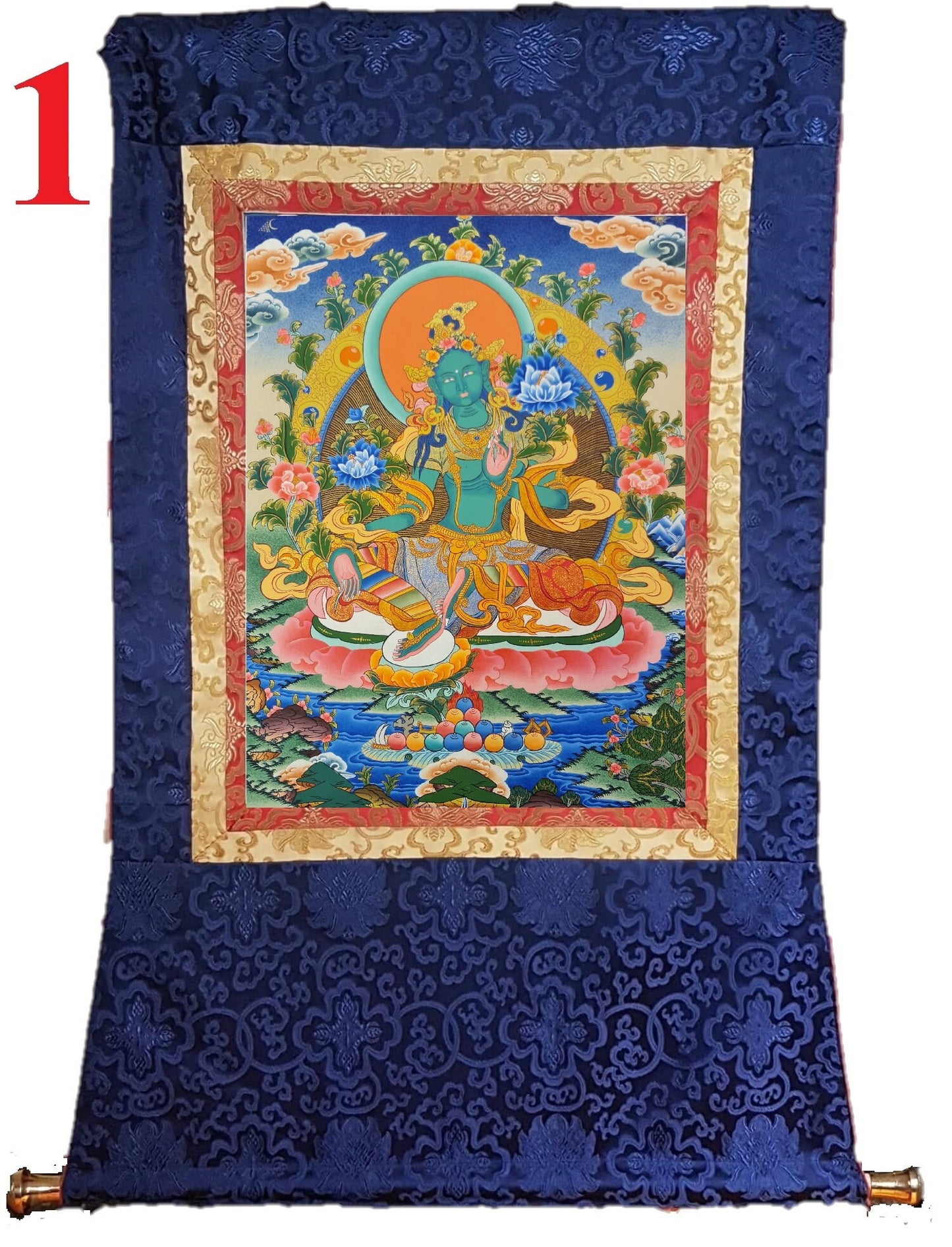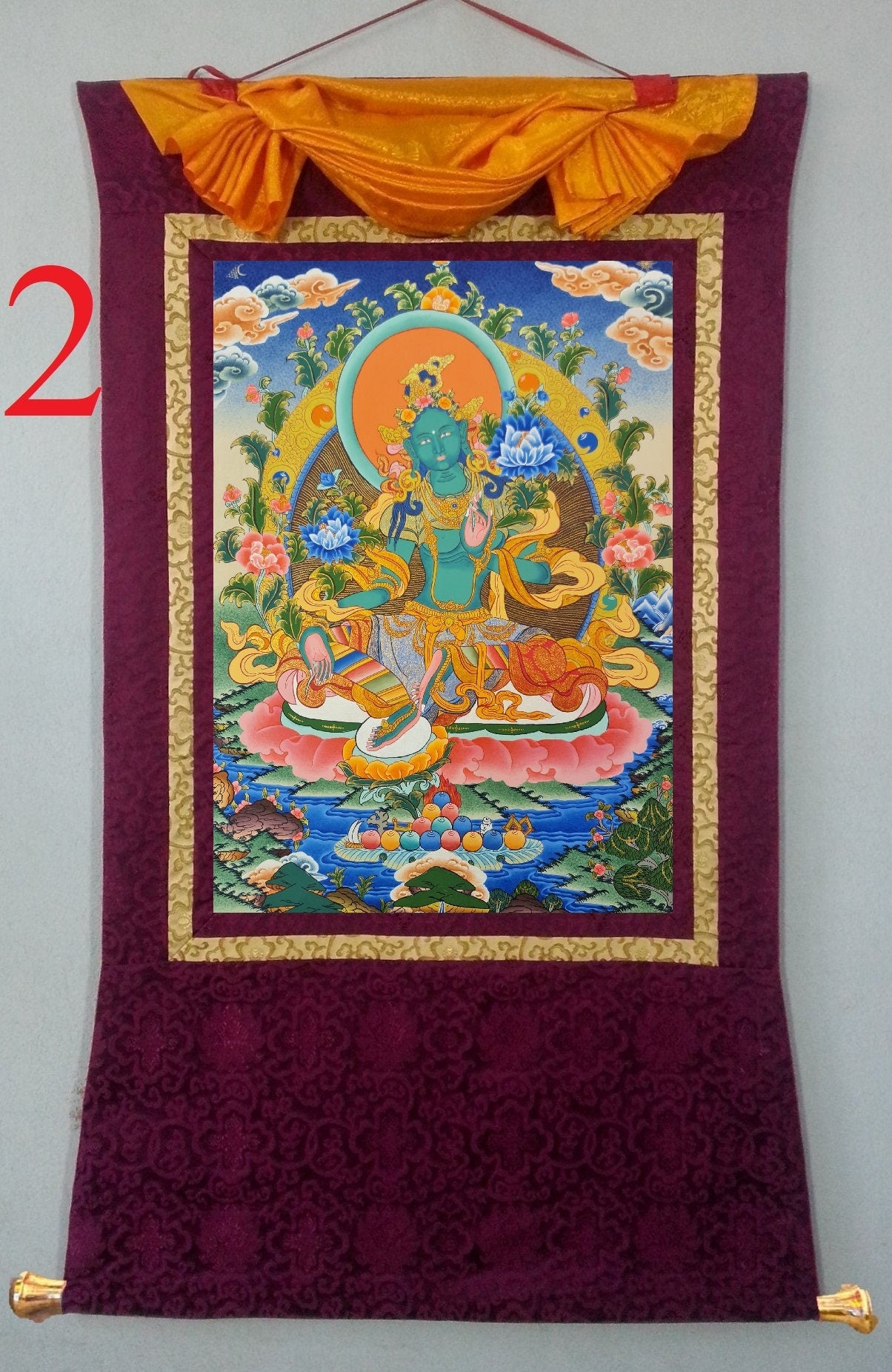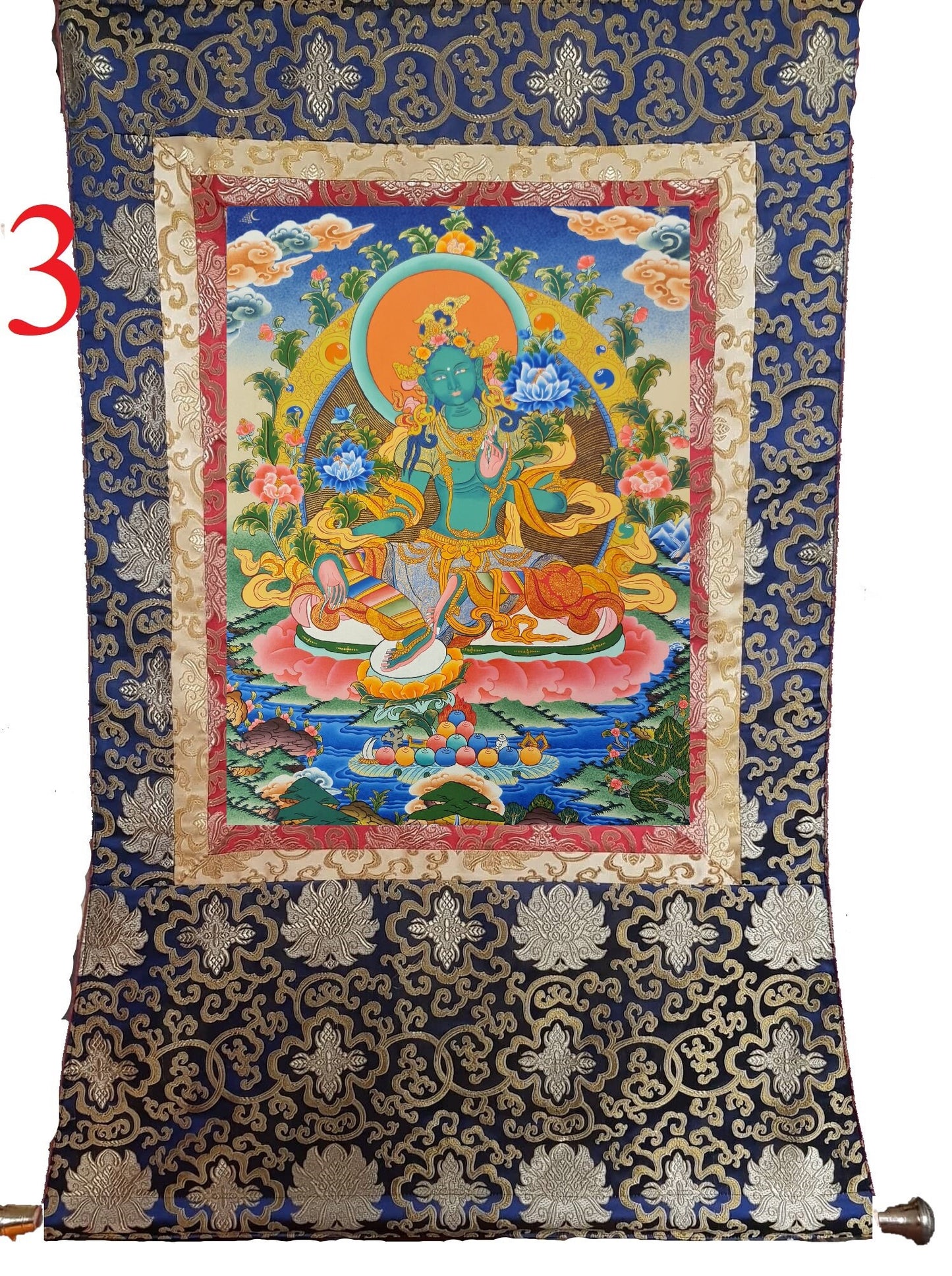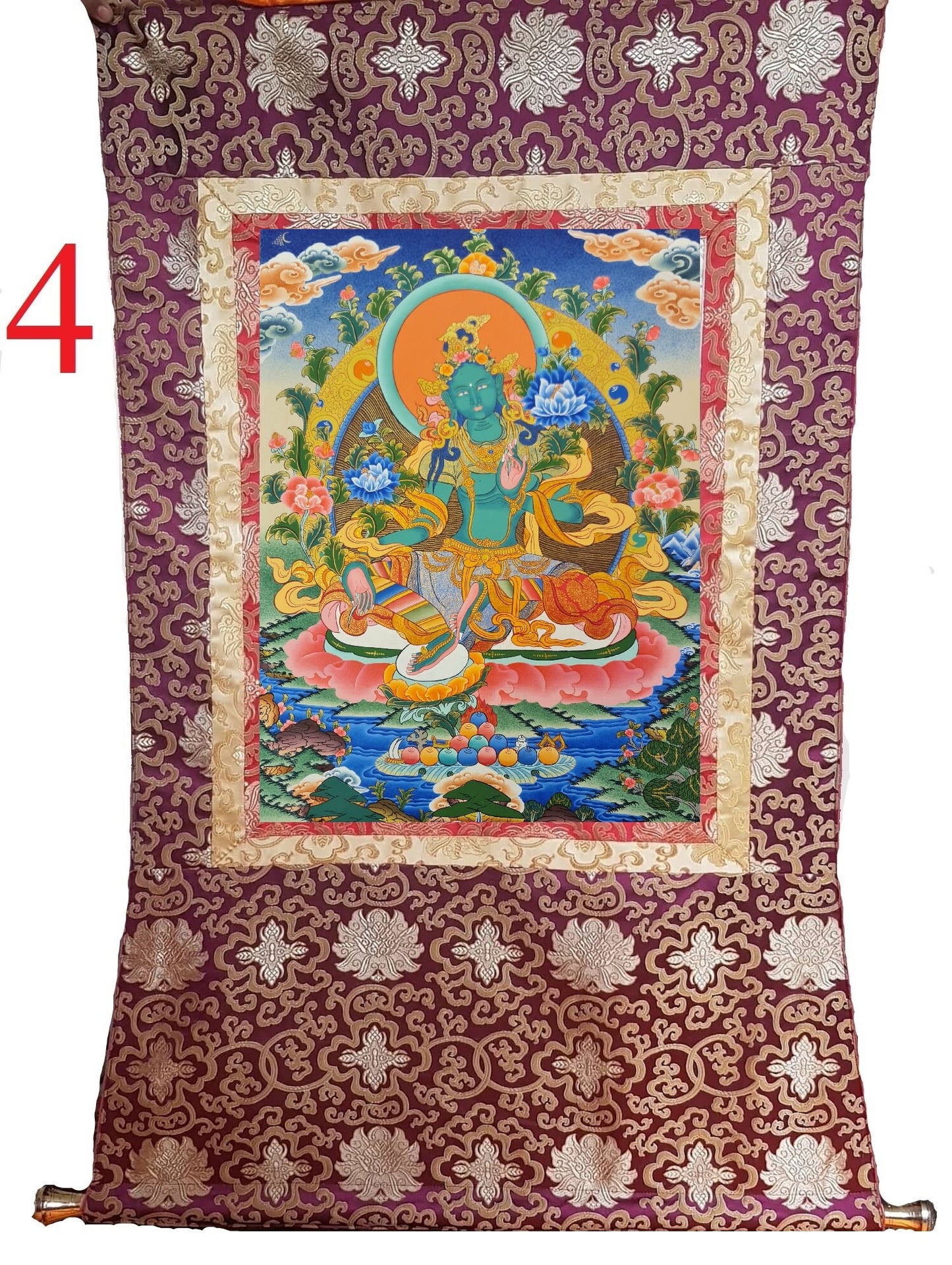1
/
of
6
My Store
56. Green Tara Thangka (Thanka). Free Brocade / Free Shipping.
56. Green Tara Thangka (Thanka). Free Brocade / Free Shipping.
Regular price
$365.00 USD
Regular price
Sale price
$365.00 USD
Quantity
Couldn't load pickup availability
Green Goddess of Compassion : Full of Compassion to help other people. She has always one of her legs down, so that she can take only one step whenever anyone calls her for help.
Origins of Tara: According to Buddhist tradition, Tara was born out of the tears of compassion of the bodhisattva Avalokiteshvara. It is said that he wept as he looked upon the world of suffering beings, and his tears formed a lake in which a lotus sprung up. When the lotus opened, the goddess Tara was revealed. A similar tradition has White Tara born from the tears of Avalokiteshvara's left eye and the Green Tara born from those of his right. In a third legend, Tara was born from a beam of blue light emanating from one of the eyes of Avalokiteshvara. Tara is also the consort of Avalokiteshvara. Green Tara, with her half-open lotus, represents the night, and White Tara, with her lotus in full bloom, symbolizes the day. Green Tara embodies virtuous activity while White Tara displays serenity and grace. Together, the Green and White Taras symbolize the unending compassion of the goddess who labors day and night to relieve suffering.
In seventh-century Tibet, Tara was believed to be incarnated in every pious woman. She especially came to be associated with two historical wives of the first Buddhist king of Tibet, Srong-brtsan-sgam-po (d. 649). His wife from imperial China was said to be an incarnation of White Tara, while the king's Nepalese wife was an incarnation of Green Tara. It may be that the desire to regard both these pious women as incarnations of Tara led to the concept of the goddess's green and white forms.
Green Tara (Sanskrit: Syamatara; Tibetan: Sgrol-ljang), filled with youthful vigor, is a goddess of activity. She is the fiercer form of Tara, but is still a savior-goddess of compassion. She is the consort of Avalokiteshvara and considered by some to be the original Tara. Like Avalokiteshvara, the Green Tara is believed to be an emanation of the "self-born" Buddha Amitabha, and an image of Amitabha is sometimes depicted in Tara's headdress. Green Tara is believed to have been incarnated as the Nepali wife of the Tibetan king Srong-brtsan-sgam-po. In Buddhism, the color green signifies activity and accomplishment. Thus Amoghasiddhi, the Lord of Action, is also associted with the color green. Green Tara is iconographically depicted in a posture of ease and readiness for action. While her left leg is folded in the contemplative position, her right leg is outstretched, ready to spring into action. Green Tara's left hand is in the refuge-granting mudra (gesture); her right hand makes the boon-granting gesture. In her hands she also holds closed blue lotuses (utpalas), which symbolize purity and power. She is adorned with the rich jewels of a bodhisattva. In Buddhist religious practice, Green Tara's primary role is savioress. She is believed to help her followers overcome dangers, fears and anxieties, and she is especially worshipped for her ability to overcome the most difficult of situations. Green Tara is intensely compassionate and acts quickly to help those who call upon her.
The iconography and role of Green Tara is illustrated in this medieval devotional hymn:
On a lotus seat, standing for realization of voidness, (You are) the emerald-colored, one-faced, two-armed Lady In youth's full bloom, right leg out, left drawn in, Showing the union of wisdom and art - homage to you! Like the outstretched branch of the heavenly turquoise tree, Your supple right hand makes the boon- granting gesture, Inviting the wise to a feast of supreme accomplishments, As if to an entertainment-homage to you! Your left hand gives us refuge, showing the Three Jewels; It says, "You people who see a hundred dangers, Don't be frightened-I shall swiftly save you!" Homage to you! Both hands signal with blue utpala flowers, "Samsaric beings! Cling not to worldly pleasures. Enter the great city of liberation!" Flower-goads prodding us to effort-homage to you! ---First Dalai Lama (1391-1474)
Size:
Size without Brocade: 14 inches by 18 inches
Shipping:
We ship within 2 business day.
DHL Shipping: 5 to 8 business days with tracking number. Insurance against loss.
We do wholesale too.
Our one and only priority in this business is to provide "Hassle free Customer Satisfaction". We have "Quality Products" with "Cheapest Price" in the market.
Please contact us to resolve any issues. Contact us via email before leaving any negative or neutral comments. We promise you that we will resolve any issues.
Please confirm the return address with us before returning the product.
Share
